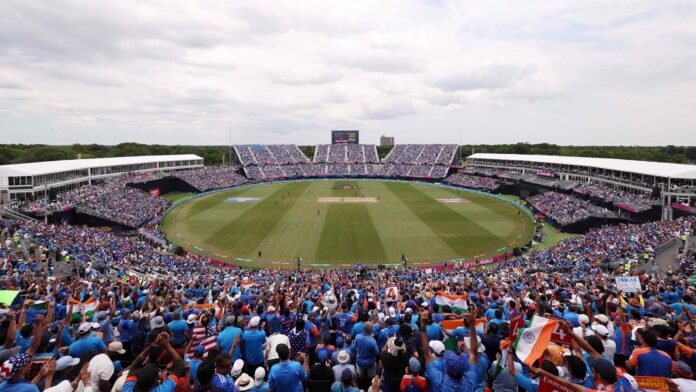Last Friday, cricket buffs around the world shared a loss, one that was felt most acutely by protestors against the vagaries of weather. Frank Duckworth died at the age of 84. He was a statistician who batted for justice. He was an Englishman, too, and the great injustice that drew him to the arena of a sport that makes heroic claims to fairness was an unfair win by his own country.
In a semi-final match of the 1992 World Cup between England and South Africa, his country’s team batted first and set a target of 252 runs in 45 overs after the last five got lopped off by rain, which had stopped play for a while. In their turn at the crease, South African batters were steadily chasing that total and had scored 231 for 6 wickets in 42.5 overs when a drizzle called players off the field again.
For victory, South Africa needed just 22 runs off 13 balls, easily doable with a few big hits across the boundary. But when they got back after the forced break, they had only one ball left to make 22 runs. An almost sure win was turned into a sudden loss by a crude rain rule that deleted England’s two least-scoring overs (both with no runs scored) from its score-sheet to reset a target for 43 overs.
That twist of fate ordered by a cloudy sky had two consequences of note. England advanced to the final and lost to Pakistan, granting it the World Cup and its captain Imran Khan an aura that would later aid his rise in politics. Less fuzzy was what it did to cricket by provoking folks for whom statistics didn’t merely mean data—let alone lies, damned or otherwise—but justice.
After all, as a discipline, it’s doomed if it doesn’t strive against bias. This is the passion that animates the dispassionate. Which may explain why Duckworth teamed up with former cricketer Tony Lewis to work out an equitable formula to reset a target if a match gets interrupted. Either that, or a business-like view of cricket. The duo cracked the puzzle by focusing on the resources at hand in terms of deliveries and wickets.
They combined both factors to get a ‘resource percentage’ for each scenario. The resultant Duckworth-Lewis (DL) chart is a large matrix with ‘100%’ in its top-left corner for full charge (all overs available with all wickets, i.e.), with this gauge dropping as both resources deplete.
Since we can consult it for delivery depletions caused by rain, we can calculate a revised target that sets the resources of both teams at par, done by scaling down the original score by the ratio of their differing resource availability. It takes some math, but isn’t something a captain can’t do on a phone.
Adopted by the International Cricket Council in 1999, the DL chart has proven fairly useful for 50-over clashes. For T20, though, it’s less useful, as data analysis suggests. Available balls matter more than wickets in the 20-over format and this difference amplifies the core weakness of the DL method: it ignores how batting line-ups vary.
An explosive tail of pinch-hitters is assumed to pack the same punch as one likely to collapse like an idiomatic bicycle stand. Still, cricket fans are in Duckworth’s debt. It’s a name we cannot easily forget, if only because ‘duck’ means a score of zero, a concept whose ‘worth’ is an enduring paradox: It is incalculable, frankly, for it’s what enabled us to calculate.
Duckworth’s legacy needn’t be placed at such an exalted level, but in a world that finds itself let down by all sorts of other much-hyped charts, from meteorology to astrology, what he gave us is valuable: a nudge to level the playing field, even if the levellers we craft aren’t perfect.
#Duckworth #levelled #playing #field #cricket #didnt
